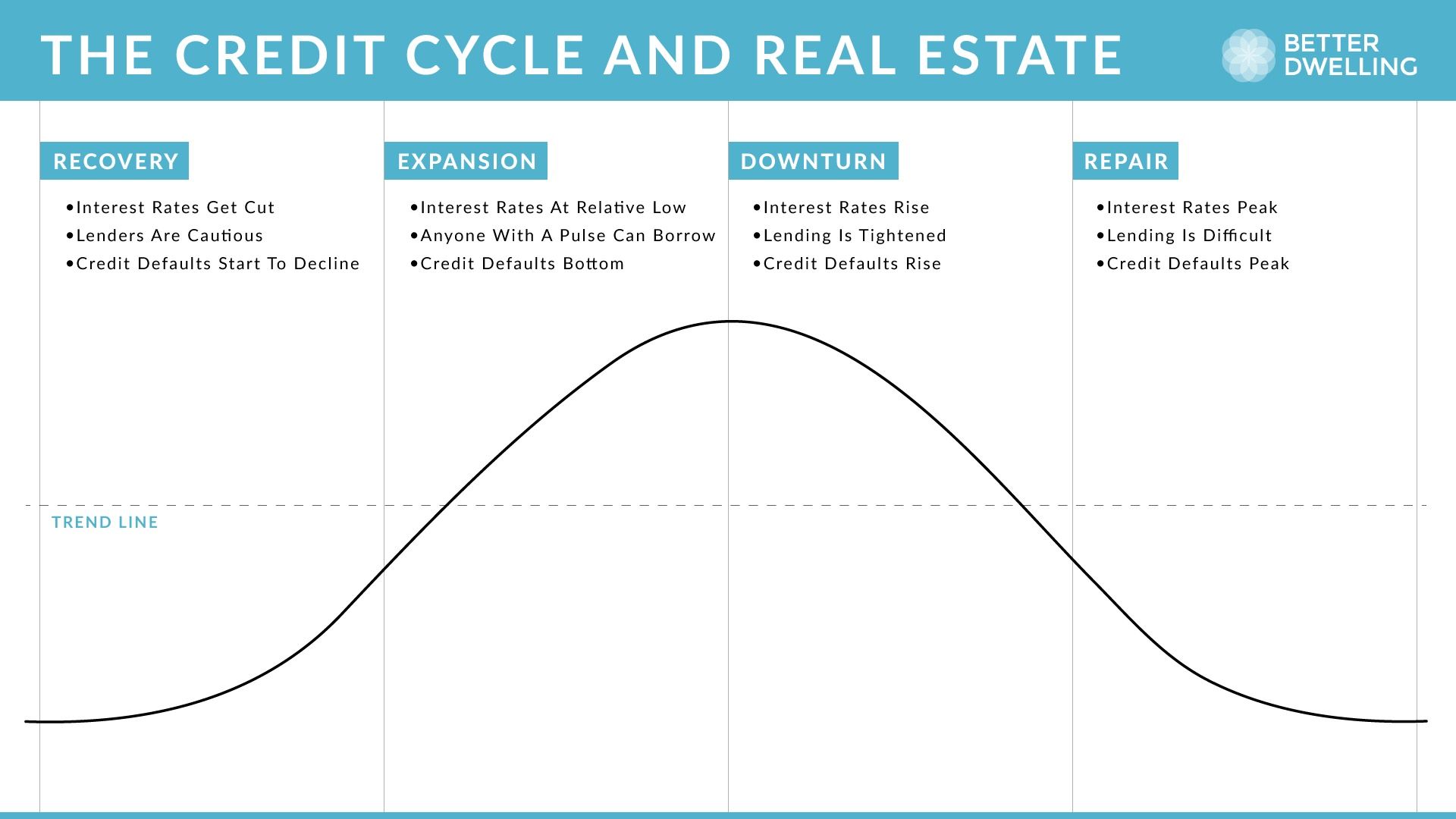Home>Finance>When Would A Biller Most Likely Submit A Claim To Secondary Insurance?


Finance
When Would A Biller Most Likely Submit A Claim To Secondary Insurance?
Published: November 28, 2023
A biller would most likely submit a claim to secondary insurance in cases where the primary insurance coverage is not sufficient to cover the entire cost. Understand the finance aspect of the billing process.
(Many of the links in this article redirect to a specific reviewed product. Your purchase of these products through affiliate links helps to generate commission for LiveWell, at no extra cost. Learn more)
Table of Contents
- Introduction
- Definition of Secondary Insurance
- Primary Insurance Coverage
- Reasons for Submitting a Claim to Secondary Insurance
- Coordination of Benefits
- Types of Secondary Insurance
- Medicare as Secondary Insurance
- Medicaid as Secondary Insurance
- Worker’s Compensation as Secondary Insurance
- Auto Insurance as Secondary Insurance
- Other Situations for Submitting a Claim to Secondary Insurance
- Conclusion
Introduction
Welcome to the world of insurance! If you’ve ever had to visit a healthcare provider or deal with an unexpected accident, you’re likely familiar with the concept of insurance. Insurance provides financial protection and peace of mind by covering the cost of medical expenses, property damage, or other unforeseen events. However, when it comes to medical insurance, things can get a bit more complicated.
Health insurance is often a layered system, where multiple insurance policies may be involved in covering your medical expenses. This is especially true in the case of secondary insurance. In this article, we will explore when and why billers submit claims to secondary insurance.
Secondary insurance, sometimes referred to as supplementary or additional insurance, comes into play when an individual has coverage under more than one insurance plan. The primary insurance covers the majority of the medical costs, while the secondary insurance acts as a backup to cover any remaining expenses not covered by the primary insurance.
The primary insurance is responsible for processing the initial claim and paying its share of the medical expenses. Once the primary insurance has processed the claim, the remaining balance, if any, is submitted to the secondary insurance for consideration.
There are various reasons why a biller would submit a claim to secondary insurance. One common reason is that the primary insurance may have limitations or exclusions that could leave the patient with substantial out-of-pocket expenses. In such cases, the secondary insurance helps to bridge the gap and provide additional coverage.
Additionally, the coordination of benefits is an important factor in deciding when to submit a claim to secondary insurance. Coordination of benefits ensures that the combined benefits of both primary and secondary insurance do not exceed the total allowable charges for the medical services rendered. The coordination process helps to prevent overpayment, and ultimately, ensures that the patient is not responsible for paying more than their fair share for healthcare services.
Next, let’s take a closer look at the different types of secondary insurance and how they come into play in specific situations.
Definition of Secondary Insurance
Secondary insurance, as the name suggests, is an additional insurance policy that comes into play when an individual has coverage under more than one insurance plan. It acts as a supplementary coverage option to fill in the gaps left by the primary insurance.
In the context of healthcare, secondary insurance is typically used to cover expenses not reimbursed by the primary insurance. These expenses may include deductibles, co-payments, coinsurance, and services not covered by the primary insurance plan.
It’s important to note that secondary insurance does not act as a replacement for primary insurance. Instead, it works in conjunction with the primary insurance to provide a higher level of coverage and reduce out-of-pocket expenses.
Secondary insurance comes into play after the primary insurance has processed the claim and made the necessary payments. The remaining balance, if any, is then submitted to the secondary insurance for consideration. The secondary insurance policy will review the claim and reimburse the eligible expenses, up to the coverage limits outlined in the policy.
It’s worth mentioning that not all individuals have secondary insurance, as it is typically an optional coverage that individuals can purchase in addition to their primary insurance. Secondary insurance can be obtained through various avenues, such as employer-sponsored plans, individual plans, or government programs.
The terms and conditions of secondary insurance can vary depending on the specific insurance provider and policy. It’s important to carefully review the policy documents to understand the coverage limits, exclusions, and any specific requirements for filing claims.
When selecting secondary insurance, it’s essential to consider your unique healthcare needs, primary insurance coverage, and budget. The goal is to have a comprehensive insurance plan in place that provides adequate coverage for medical expenses and minimizes out-of-pocket costs.
Now that we have a clear understanding of what secondary insurance is, let’s explore the reasons why billers may submit a claim to secondary insurance.
Primary Insurance Coverage
Primary insurance coverage refers to the first insurance policy that an individual holds to protect themselves against certain risks, such as medical expenses, property damage, or liability claims. It is the insurance policy responsible for processing and paying the initial claims for covered services.
When it comes to healthcare, primary insurance coverage is often provided through employer-sponsored plans, individual health insurance plans, or government programs such as Medicaid or Medicare. The primary insurance policy determines the extent of coverage and the specific terms and conditions under which it will reimburse for medical services.
Primary insurance coverage typically includes a variety of benefits, such as coverage for doctor visits, hospital stays, prescription medications, diagnostic tests, and preventive care. The specific coverage may vary depending on the insurance plan and the individual’s specific healthcare needs.
Primary insurance coverage typically requires individuals to pay certain out-of-pocket costs, such as deductibles, co-payments, and coinsurance. These costs are the responsibility of the insured individual and may vary depending on the specific insurance plan.
When a healthcare service is rendered, the healthcare provider submits a claim to the primary insurance for reimbursement. The primary insurance reviews the claim, determines the covered amount based on the policy terms, and pays the provider directly for the covered services.
It’s important to understand that the primary insurance policy may have certain limitations or exclusions that result in the insured individual being responsible for a portion of the medical expenses. These expenses can include deductibles, co-pays, coinsurance, or services not covered by the primary insurance plan.
In such cases, the remaining balance after the primary insurance has processed the claim is submitted to the secondary insurance for consideration. The secondary insurance may provide additional coverage for the expenses not covered by the primary insurance, subject to the terms and conditions of the secondary insurance policy.
Understanding your primary insurance coverage is crucial in determining when and why a biller may need to submit a claim to secondary insurance. It helps identify the gaps in coverage and ensures that you receive the maximum benefits available to you under your insurance plans.
Next, let’s explore the reasons why billers may submit a claim to secondary insurance.
Reasons for Submitting a Claim to Secondary Insurance
Submitting a claim to secondary insurance is a common practice to ensure that any remaining medical expenses not covered by the primary insurance are paid by the secondary insurance policy. There are several reasons why billers may choose to submit a claim to secondary insurance:
- Coverage Limits: The primary insurance policy may have coverage limits that could leave the patient with out-of-pocket expenses. In such cases, the secondary insurance can help bridge the gap and provide additional coverage for the remaining expenses.
- Specific Services: Some primary insurance policies may not cover certain services or treatments. If the healthcare provider has rendered any services that are not covered by the primary insurance policy, the biller may submit a claim to the secondary insurance to seek reimbursement for those services.
- Non-Network Providers: Primary insurance plans often have a preferred network of healthcare providers. If a patient receives care from a non-network provider, the primary insurance may provide limited coverage. In such cases, the biller may submit a claim to the secondary insurance, which may have a broader network or provide better coverage for out-of-network services.
- Deductibles and Copayments: Primary insurance policies often require individuals to pay deductibles, copayments, or coinsurance for medical services. If the patient has already met their deductible or copayment for the primary insurance, the biller may submit a claim to the secondary insurance to seek reimbursement for any remaining out-of-pocket expenses.
- Coordination of Benefits: Coordination of benefits is an important factor in deciding when to submit a claim to secondary insurance. The coordination process ensures that the combined benefits of both primary and secondary insurance do not exceed the total allowable charges for the medical services rendered. By submitting a claim to the secondary insurance, the biller ensures that the patient is not responsible for paying more than their fair share for healthcare services.
It is important to note that submitting a claim to secondary insurance does not guarantee reimbursement. The secondary insurance policy will evaluate the claim based on its terms and conditions and may have its own coverage limits and exclusions. However, by submitting the claim, billers maximize the chances of obtaining additional coverage for uninsured or underinsured medical expenses.
Now that we understand the reasons for submitting a claim to secondary insurance, let’s delve into the concept of coordination of benefits and its role in secondary insurance.
Coordination of Benefits
Coordination of benefits is a process that ensures that the combined benefits of both primary and secondary insurance do not exceed the total allowable charges for the medical services rendered. It helps prevent overpayment and ensures that the patient is not responsible for paying more than their fair share of healthcare expenses.
When an individual has coverage under multiple insurance plans, the coordination of benefits determines how the two insurance policies will work together to provide coverage for medical expenses. The primary insurance is responsible for processing the initial claim and paying its share of the covered expenses.
Once the primary insurance has processed the claim and made the necessary payment, any remaining balance is then submitted to the secondary insurance for consideration. The secondary insurance will review the claim and reimburse the eligible expenses based on its coverage limits and terms.
The coordination of benefits process typically involves the following steps:
- Identification of Primary and Secondary Insurance: The biller identifies which insurance policy is primary and which one is secondary based on the rules outlined by the insurance providers and any applicable regulations.
- Submission of Claim to Primary Insurance: The healthcare provider submits the claim to the primary insurance. The primary insurance processes the claim, determines the covered amount based on the policy terms, and makes the necessary payment to the provider.
- Verification of Payment from Primary Insurance: Once the primary insurance has processed the claim, the biller verifies the payment received and any remaining balance that needs to be submitted to the secondary insurance.
- Submission of Claim to Secondary Insurance: The biller submits the remaining balance to the secondary insurance along with any required documentation. The secondary insurance reviews the claim and reimburses the eligible expenses based on its coverage limits and terms.
- Coordination of Benefits Determination: The secondary insurance determines the allowed amount based on the coordination of benefits rules. This may involve determining which insurance policy is primary or secondary, calculating the maximum allowable amount, and ensuring that the combined benefits do not exceed the total charges.
- Reimbursement from Secondary Insurance: Once the coordination of benefits has been determined, the secondary insurance reimburses the eligible expenses up to its coverage limits. Any remaining balance not covered by the secondary insurance may be the responsibility of the patient.
Coordination of benefits is a complex process that requires careful attention to detail and adherence to the rules set forth by the insurance providers and regulatory bodies. It is essential for billers to have a clear understanding of the coordination of benefits rules to ensure accurate and timely submission of claims to secondary insurance.
Now that we understand the coordination of benefits, let’s explore the different types of secondary insurance and how they come into play in specific situations.
Types of Secondary Insurance
Secondary insurance comes in different forms, each serving a specific purpose and providing additional coverage to complement the primary insurance policy. Let’s explore some common types of secondary insurance:
- Medicare as Secondary Insurance: Medicare is a government-funded health insurance program primarily for individuals aged 65 and older. In certain situations, Medicare can act as secondary insurance to cover expenses not covered by the primary insurance. This can occur when an individual has both Medicare and another insurance plan, such as employer-sponsored coverage.
- Medicaid as Secondary Insurance: Medicaid is a government program that provides health coverage for individuals and families with low income. In some cases, Medicaid can function as secondary insurance to cover additional expenses not covered by the primary insurance. This can be particularly beneficial for individuals who have both Medicaid and another health insurance plan.
- Worker’s Compensation as Secondary Insurance: Worker’s compensation is a form of insurance that provides benefits to employees who experience work-related injuries or illnesses. In some instances, worker’s compensation can act as secondary insurance if the primary insurance does not cover expenses related to a work-related injury. It steps in to cover medical costs and wage replacement for the injured worker.
- Auto Insurance as Secondary Insurance: Auto insurance can act as secondary insurance when an individual is involved in an accident that results in medical expenses. If the primary insurance coverage, such as health insurance, does not cover certain auto accident-related costs, the auto insurance policy can provide supplementary coverage to fill in the gaps.
- Other Situations for Submitting a Claim to Secondary Insurance: There may be other situations where individuals have secondary insurance coverage through various sources, such as spouse’s employer-sponsored plans, individual insurance policies, or specific disease coverage plans. These secondary insurance policies can provide additional coverage for expenses not covered by the primary insurance policy.
It’s important to note that the specific terms and conditions of secondary insurance policies may vary. Individuals should carefully review their policy documents and consult with their insurance providers to understand the coverage limits, exclusions, and any specific requirements for filing claims.
Understanding the different types of secondary insurance helps individuals and billers navigate the complexities of the insurance system and ensure that all available coverage options are utilized to their fullest extent.
In the next section, let’s explore the specific scenarios where secondary insurance comes into play.
Medicare as Secondary Insurance
Medicare, a government-funded health insurance program, can function as secondary insurance in certain situations. Typically, Medicare acts as the primary insurance for individuals aged 65 and older or those with qualifying disabilities. However, there are instances where Medicare can serve as secondary insurance to provide additional coverage for expenses not covered by the primary insurance.
When an individual has both Medicare and another insurance plan, such as employer-sponsored coverage, Medicare may act as secondary insurance. In this scenario, the primary insurance will process the claim first and pay its share of the covered expenses. The remaining balance, including deductibles, copayments, or services not covered by the primary insurance, can be submitted to Medicare for consideration.
Medicare as secondary insurance can be particularly beneficial for individuals who have a high-deductible health plan through their employer or other private insurance. The primary insurance coverage may have significant out-of-pocket costs, and Medicare can step in to supplement coverage and reduce the financial burden.
It’s important to note that Medicare, when serving as secondary insurance, will only pay for eligible expenses up to its coverage limits. These limits are determined by Medicare guidelines and can vary depending on the specific type of Medicare coverage (Original Medicare, Medicare Advantage, or Medicare Supplement Plans).
There are certain situations where Medicare is almost always the secondary insurance. For example, in situations where an individual is eligible for both Medicare and Medicaid, Medicaid acts as the primary insurance, covering a significant portion of the healthcare costs. Medicare then acts as the secondary insurance to cover any remaining expenses not covered by Medicaid.
Understanding the role of Medicare as secondary insurance is crucial for billers and individuals navigating the healthcare system. It helps ensure that individuals receive the maximum benefits available to them and minimizes out-of-pocket expenses.
Now, let’s explore another type of secondary insurance: Medicaid as secondary insurance.
Medicaid as Secondary Insurance
Medicaid, a government program that provides health coverage for individuals and families with low income, can serve as secondary insurance in certain circumstances. In situations where an individual is eligible for both Medicaid and another health insurance plan, Medicaid can act as secondary insurance to provide additional coverage for expenses not covered by the primary insurance.
When an individual has both Medicaid and another insurance plan, the primary insurance policy processes the claim first and pays its share of the covered expenses. Any remaining balance, including deductibles, copayments, or services not covered by the primary insurance, can then be submitted to Medicaid for consideration.
Medicaid as secondary insurance can be extremely valuable for individuals with limited financial resources. It helps fill in the gaps left by the primary insurance, reducing out-of-pocket costs and ensuring access to necessary healthcare services.
One common scenario where Medicaid serves as secondary insurance is when an individual has a high-deductible health plan or other private insurance with significant out-of-pocket costs. Medicaid can step in to provide additional coverage for expenses that would otherwise be burdensome for the individual to pay.
It’s important to note that Medicaid as secondary insurance operates within certain guidelines and coverage limitations. The specific rules and regulations may vary from state to state, as Medicaid is administered by individual states within federal guidelines. Medicaid secondary insurance typically covers services that are eligible under the Medicaid program but not covered by the primary insurance.
Having Medicaid as secondary insurance requires individuals to coordinate their benefits between their primary insurance and Medicaid. This involves submitting claims to the primary insurer first and then submitting any remaining balance to Medicaid for consideration.
Understanding the role of Medicaid as secondary insurance is essential for both billers and individuals seeking healthcare services. It ensures that individuals receive the maximum benefits available and minimizes financial strain caused by medical expenses.
Now, let’s explore another type of secondary insurance: Worker’s Compensation as secondary insurance.
Worker’s Compensation as Secondary Insurance
Worker’s compensation insurance is a form of insurance that provides benefits to employees who experience work-related injuries or illnesses. In some cases, worker’s compensation can act as secondary insurance if the primary insurance does not cover expenses related to a work-related injury or illness.
When an individual is injured or becomes ill while performing job-related duties, worker’s compensation insurance is designed to cover medical costs, wage replacement, and rehabilitation expenses. However, if the primary insurance, such as health insurance, does not provide sufficient coverage for these work-related expenses, worker’s compensation can step in as secondary insurance.
Worker’s compensation as secondary insurance can be beneficial in situations where the primary insurance policy has coverage limitations for work-related injuries. By providing additional coverage, worker’s compensation helps ensure that the injured worker receives the necessary medical treatment and wage replacement benefits.
It’s important to note that worker’s compensation coverage as secondary insurance typically only applies to medical expenses and other costs specifically related to the work-related injury or illness. The primary insurance remains responsible for non-work-related healthcare expenses.
When submitting a claim for a work-related injury, it is crucial to follow the proper procedures and guidelines set by both the primary insurance and worker’s compensation insurance. This often involves reporting the injury to the employer, seeking medical treatment from authorized healthcare providers, and submitting the necessary documentation to both insurances.
Worker’s compensation as secondary insurance is especially significant for employees who work in high-risk industries, such as construction, manufacturing, or healthcare, where the risk of workplace injuries or illnesses is higher. It provides an additional layer of protection and financial support to ensure that injured workers can access the necessary care and recover without incurring significant medical expenses.
Understanding the role of worker’s compensation as secondary insurance is important for both billers and employees involved in workplace injury cases. It helps ensure that proper claims are filed, coverage is maximized, and the injured worker can receive the necessary benefits to recover and return to work.
Now, let’s explore another type of secondary insurance: Auto Insurance as secondary insurance.
Auto Insurance as Secondary Insurance
Auto insurance serves as a primary form of insurance coverage for individuals who own and operate vehicles. However, there are situations where auto insurance can act as secondary insurance to provide additional coverage for medical expenses resulting from an auto accident.
When an individual is involved in an auto accident and sustains injuries, their primary health insurance policy typically covers the medical expenses related to the accident. However, if the primary insurance coverage, such as health insurance, does not fully cover certain auto accident-related costs, auto insurance can step in as secondary insurance.
Auto insurance as secondary insurance can be particularly beneficial in scenarios where the primary insurance has limitations or exclusions specific to auto accidents. This can include coverage for medical expenses, rehabilitation costs, or even wage loss due to the accident.
It’s important to note that auto insurance as secondary insurance typically applies to expenses directly related to the auto accident. This may include coverage for necessary medical treatment, rehabilitation services, and other accident-related costs that are not covered by the primary health insurance.
When an accident occurs, the injured party would first file a claim with their primary health insurance provider. Once the primary insurance has processed the claim and made the necessary payments, any remaining balance or expenses not covered by the primary insurance can be submitted to the auto insurance provider for consideration as secondary coverage.
Understanding the role of auto insurance as secondary insurance is vital for both billers and individuals involved in auto accident-related medical claims. By recognizing the possibility of additional coverage, billers can help maximize the benefits available to the patient and reduce their out-of-pocket expenses.
It’s crucial to communicate with both health insurance and auto insurance providers to understand the coordination of benefits process and ensure accurate submissions of claims and supporting documentation.
Now, let’s explore other situations where submitting a claim to secondary insurance may be necessary.
Other Situations for Submitting a Claim to Secondary Insurance
While Medicare, Medicaid, worker’s compensation, and auto insurance are common examples of secondary insurance, there are various other situations where submitting a claim to secondary insurance may be necessary. These situations can arise when individuals have secondary insurance coverage through various sources:
- Spouse’s Employer-Sponsored Plans: When an individual is covered under their own primary insurance and also eligible for coverage under their spouse’s employer-sponsored plan, the spouse’s plan can act as secondary insurance. This can provide additional coverage for medical expenses that may not be fully covered by the individual’s primary insurance.
- Individual Insurance Policies: Some individuals may choose to have multiple individual insurance policies to enhance their coverage. In such cases, when expenses are not fully covered by the primary insurance policy, the additional individual insurance policy can serve as secondary insurance to cover the remaining costs.
- Specific Disease Coverage Plans: Certain insurance plans or policies may be designed specifically to cover expenses related to certain diseases or conditions. When individuals have primary insurance coverage that does not fully cover the expenses associated with these specific conditions, the disease coverage plan can act as secondary insurance.
- Out-of-Network Services: If an individual receives healthcare services from a provider who is not in-network with their primary insurance, it may result in limited coverage. In these cases, secondary insurance can step in to provide additional coverage for out-of-network services that are not adequately covered by the primary insurance.
- Situations with Multiple Insurance Plans: Individuals may find themselves in situations where they have multiple insurance plans due to unique circumstances or changing coverage. For example, transitioning from one job to another or reaching the age of eligibility for Medicare while still having employer-sponsored coverage. In these situations, secondary insurance can provide additional coverage to bridge the gaps left by the primary insurance policies.
Having secondary insurance in these situations is valuable as it helps individuals reduce their out-of-pocket expenses and ensures access to necessary healthcare services. It’s crucial to understand the terms and conditions of each insurance policy, coordinate benefits properly, and accurately submit claims to maximize coverage.
Now that we have explored various types of secondary insurance and situations where submitting a claim to secondary insurance may be necessary, let’s summarize the key points.
Conclusion
Understanding secondary insurance and knowing when to submit a claim to secondary insurance is crucial in navigating the complex world of healthcare coverage. Secondary insurance acts as supplementary coverage, filling in gaps left by the primary insurance and reducing out-of-pocket expenses for individuals.
We explored different types of secondary insurance, including Medicare, Medicaid, worker’s compensation, and auto insurance. Each type serves a specific purpose and provides additional coverage for certain situations. Additionally, we discussed other scenarios where individuals may have secondary insurance coverage through sources like spouse’s employer-sponsored plans, individual policies, or disease-specific coverage.
Reasons for submitting a claim to secondary insurance include coverage limits, specific services not covered by the primary insurance, non-network providers, deductibles and copayments, and coordination of benefits. The coordination of benefits ensures that the combined benefits of primary and secondary insurance do not exceed the total allowable charges for medical services rendered.
It is important for billers and individuals to understand the terms and conditions of secondary insurance policies, follow proper procedures for submitting claims, and coordinate benefits accurately to maximize coverage.
By utilizing secondary insurance effectively, individuals can minimize financial burden and access the necessary healthcare services they need. It’s essential to review policy documents, communicate with insurance providers, and seek assistance from healthcare professionals or insurance experts when needed to ensure proper understanding and utilization of secondary insurance.
Overall, secondary insurance plays a crucial role in providing additional coverage and reducing out-of-pocket expenses for individuals. By understanding its role and navigating the coordination of benefits process, individuals can optimize their healthcare coverage and focus on their well-being.














